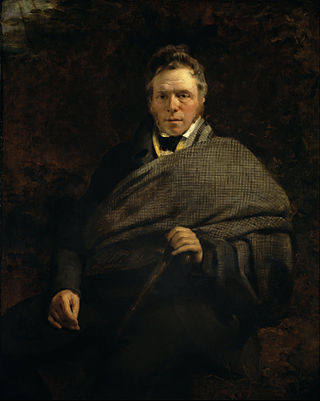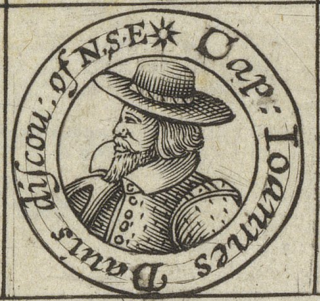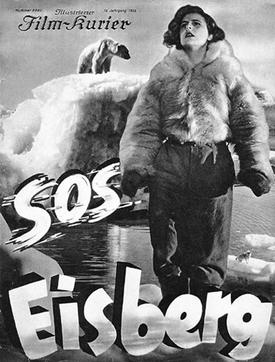Related Research Articles
George Gordon, 1st Earl of Aberdeen, was a Lord Chancellor of Scotland.

Knud Johan Victor Rasmussen was a Greenlandic-Danish polar explorer and anthropologist. He has been called the "father of Eskimology" and was the first European to cross the Northwest Passage via dog sled. He remains well known in Greenland, Denmark and among Canadian Inuit.

The history of Greenland is a history of life under extreme Arctic conditions: currently, an ice sheet covers about eighty percent of the island, restricting human activity largely to the coasts.

James Hogg was a Scottish poet, novelist and essayist who wrote in both Scots and English. As a young man he worked as a shepherd and farmhand, and was largely self-educated through reading. He was a friend of many of the great writers of his day, including Sir Walter Scott, of whom he later wrote an unauthorised biography. He became widely known as the "Ettrick Shepherd", a nickname under which some of his works were published, and the character name he was given in the widely read series Noctes Ambrosianae, published in Blackwood's Magazine. He is best known today for his novel The Private Memoirs and Confessions of a Justified Sinner. His other works include the long poem The Queen's Wake (1813), his collection of songs Jacobite Relics (1819), and his two novels The Three Perils of Man (1822), and The Three Perils of Woman (1823).

John Davis was one of the chief navigators of Queen Elizabeth I of England. He led several voyages to discover the Northwest Passage and served as pilot and captain on both Dutch and English voyages to the East Indies. He discovered the Falkland Islands in August 1592.

The Narrative of Arthur Gordon Pym of Nantucket, written in 1838, is the only complete novel by American writer Edgar Allan Poe. The work relates the tale of the young Arthur Gordon Pym, who stows away aboard a whaling ship called the Grampus. Various adventures and misadventures befall Pym, including shipwreck, mutiny, and cannibalism, before he is saved by the crew of the Jane Guy. Aboard this vessel, Pym and a sailor named Dirk Peters continue their adventures farther south. Docking on land, they encounter hostile, black-skinned natives before escaping back to the ocean. The novel ends abruptly as Pym and Peters continue toward the South Pole.

Didrik Pining was a German privateer, nobleman and governor of Iceland and Vardøhus.

Admiral Sir George Back was a British Royal Navy officer, explorer of the Canadian Arctic, naturalist and artist. He was born in Stockport.

The Fall of Troy is the debut studio album by The Fall of Troy, released on November 4, 2003. It was released by Lujo Records and Equal Vision Records on the re-release. It was recorded at The Hall of Justice in Seattle.

William Bradford was an American romanticist painter, photographer and explorer, originally from Fairhaven, Massachusetts, near New Bedford. His early work focused on portraits of the many ships in New Bedford Harbor. In 1858, his painting New Bedford Harbor at Sunset was included in Albert Bierstadt's landmark New Bedford Art Exhibition.

Iceberg is an adventure novel by Clive Cussler published in the United States by Dodd, Mead & Company in 1975. This is the 3rd published book to feature the author's primary protagonist Dirk Pitt.

S.O.S. Eisberg is a 1933 German-US pre-Code drama film directed by Arnold Fanck and starring Gustav Diessl, Leni Riefenstahl, Sepp Rist, Gibson Gowland, Rod La Rocque, and Ernst Udet. The film was written by Tom Reed based on a story by Arnold Fanck and Friedrich Wolf. S.O.S. Eisberg follows the account of the real-life Alfred Lothar Wegener polar expedition of 1929-30. Two members of the ill-fated Wegener expedition served as technical consultants to Universal.

New South Greenland, sometimes known as Morrell's Land, was an appearance of land recorded by the American captain Benjamin Morrell of the schooner Wasp in March 1823, during a sealing and exploration voyage in the Weddell Sea area of Antarctica. Morrell provided precise coordinates and a description of a coastline which he claimed to have sailed along for more than 300 miles (480 km). Because the Weddell Sea area was so little visited and hard to navigate due to ice conditions, the alleged land was never properly investigated before its existence was emphatically disproven during Antarctic expeditions in the early 20th century.

The McClintock Arctic expedition of 1857 was a British effort to locate the last remains of Franklin's lost expedition. Led by Francis Leopold McClintock, RN aboard the steam yacht Fox, the expedition spent two years in the region and ultimately returned with the only written message recovered from the doomed expedition. McClintock and crew were awarded the Arctic medal in recognition of their achievements.

The Icebergs is an 1861 oil painting by the American landscape artist Frederic Edwin Church. It was inspired by his 1859 voyage to the North Atlantic around Newfoundland and Labrador. Considered one of Church's "Great Pictures"—measuring 1.64 by 2.85 metres —the painting depicts one or more icebergs in the afternoon light of the Arctic. It was first displayed in New York City in 1861, where visitors paid 25 cents' admittance to the one-painting show. Similar exhibitions in Boston and London followed. The unconventional landscape of ice, water, and sky generally drew praise, but the American Civil War, which began the same year, lessened critical and popular interest in New York City's cultural events.

Thomas Abernethy was a Scottish seafarer, gunner in the Royal Navy, and polar explorer. Because he was neither an officer nor a gentleman, he was little mentioned in the books written by the leaders of the expeditions he went on, but was praised in what was written. In 1857, he was awarded the Arctic Medal for his service as an able seaman on the 1824–25 voyage of HMS Hecla, the first of his five expeditions for which participants were eligible for the award. He was in parties that, for their time, reached the furthest north, the furthest south (twice), and the nearest to the South Magnetic Pole. In 1831, along with James Clark Ross's team of six, Abernethy was in the first party ever to reach the North Magnetic Pole.
The Spy was a periodical directed at the Edinburgh market, edited by James Hogg, with himself as principal contributor, which appeared from 1 September 1810 to 24 August 1811. It combined features of two types of periodical established in the 18th century, the essay periodical and the miscellany. As an outsider, Hogg used his periodical to give a critical view of the dominant upper-class culture of Edinburgh, with Walter Scott and Francis Jeffrey as its leading lights, and to launch his career as a writer of fiction as well as poetry.
Queen Hynde (1825) is an epic poem in six cantos by James Hogg. Set in western Scotland in the sixth century, it tells the story of the defeat of an invading Norwegian army by forces loyal to Queen Hynde, advised by Columba, and of the winning of her hand by the legitimate claimant of the throne Eiden. It is mostly in octosyllabic couplets.
Altrive Tales (1832) by James Hogg is the only volume to have been published of a projected twelve-volume set with that title bringing together his collected prose fiction. It consists of an updated autobiographical memoir, a new novella, and two reprinted short stories.
Tales of the Wars of Montrose is a set of six fictional narratives by James Hogg published in 1835. Each of them centres on the fortunes of an individual during the civil conflict of the 1640s in Scotland.
References
- Hogg, James (1987), "The Surpassing Adventures of Allan Gordon", in Hughes, Gillian (ed.), Altrive Chapbooks (PDF), vol. 2, Stirling: The James Hogg Society, pp. 1–57, retrieved 14 June 2010